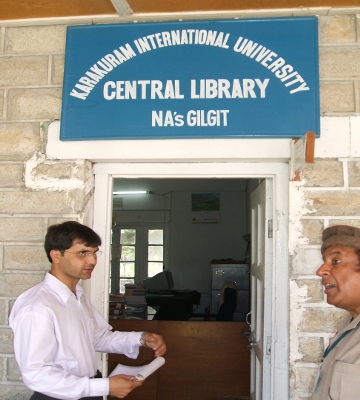













The Central Karakorum National Park (CKNP)…
The Central Karakorum National Park (CKNP) is one of the most important national parks of Pakistan and comprises one of the largest mountain glacial systems in the world with Siachen (75 km), Baltoro (57 km) and Hispar-Biafo (122 km) glaciers originating within its boundaries. Administratively, it is situated in the Skardu and Gilgit districts of the Gilgit and Baltistan Region of Pakistan.
The 72,500 km2 national park borders China, Afghanistan, and India, and represents one section of the of Hindu Kush-Karakorum-Himalaya mountain range.
The area is part of the "transitional zone" between the arid Central Asia and the semi-humid subtropics of the northern South Asia.
A biodiversity hotspot…
The Central Karakorum National Park (CKNP) is home to a rich array of fauna and flora owing to varied micro-climates, and ecological conditions, and is a source of water and other ecosystem services of ecological, aesthetic, and socioeconomic significance, not only for those living within the area, but also for people living beyond. The area is host to most of the endemic floral species found in Pakistan and refuge for threatened species: snow leopard, Markhor, Marco Polo sheep, musk deer, Himalayan lynx, blue sheep, brown bear, Indian wolf and Himalayan ibex.
Multiple challenges…
Today, the CKNP is facing enormous conservation and sustainable development challenge that are both global and local in nature.
Of especial interest is the global climate change and consequent impacts on the glacier dominated mountain ecosystem. Human activities such as livestock rearing and deforestation threaten survival of many mountain species especially in the Hopar, Hispar, and Shimshal Valleys.
The park’s remoteness and unique terrain conditions with vastly varying physical, biological and societal systems pose special management challenges. Inadequate policies and strategies; weak institutional, administrative, planning, and management capacities; inadequate data and information management; and poverty present enormous challenges to CKNP conservation and sustainable development. Strategic intervention combining both modern conservation paradigm and traditional knowledge can guide sustainable development. Genetic resources offer opportunities for livelihoods but only if used wisely. Tourism can benefit people and environment if sufficient revenue is retained locally.
Sustainable development of the national park…
Since the declaration of the central Karakorum region as a national park in 1993, several activities aimed at conserving the environment, preserving the cultural heritage and promoting rural development are being carried out by several government and nongovernment actors. However, the effectiveness of these interventions yielded much less than desired due to lack of coordination and local human resources capacity, and absence of an integrated management plan.
In order to promote sustainable development through better coordination of ongoing efforts and initiatives, development of integrated management plan supported by knowledgebase and environmental monitoring programme, UNEP and Italian EV-K2-CNR is jointly implementing the “Integration and harmonization of sustainable development interventions in the Central Karakorum National Park, Pakistan” project commonly known as Karakorum Trust Project 2.
Key activities….
Partners…
Partners of the Karakorum Trust Project (Phase 2) include ministry, scientific institutions and academia and local organizations in Pakistan.

| Attachment | Size |
|---|---|
| Askole and the Upper Braldo Valley Project.pdf | 813.24 KB |
| Garnet Project.pdf | 2.98 MB |
| Brochure Karakorum Trust 2.pdf | 1.91 MB |